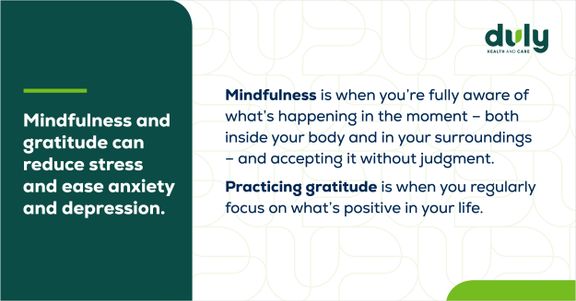There’s nothing like a nice long walk on a crisp fall day or in the warm summer sun. But as the cold winter weather sets in, it can be easy to trade in walks for an afternoon snuggled on your cozy couch.
That is actually very common. In the US, nearly 60% of adults say that they are less active in the winter than they are in warmer weather.
However, it’s important to keep up with exercise year-round – and walking is a great way to get the physical activity you need.
If you’ve been keeping up with the latest TikTok and Instagram exercise trends, you may be familiar with the “Hot Girl Walk®.” This is a 4‑mile walk (or any distance you can walk comfortably) where you think about what you’re grateful for, achieving your goals, and, of course, how hot you are.
Even if you’re not into it, the “Hot Girl Walk” is onto something. It promotes the physical and mental benefits of walking. And whether you’re already an avid walker or it’s something you’re hoping to get into, the cold weather doesn’t need to stand in the way.
Also read: Boost Your Steps Per Day — Hint: It’s Not Just About Walking More
Here are 4 ways to continue your walks and make sure you still get the benefits of walking:
1. Find a new place to walk.
Treadmills, walking pads, and gyms with tracks all allow you to walk indoors. However, walking without going anywhere or circling the same track over and over again can get a little boring. Fortunately, you don’t need to invest in expensive equipment or a fancy gym membership in order to get those walks in.
Look for other places that you can walk around inside for free. When you need to go shopping, go early and take a power walk around the mall first. Spend your afternoon walking around a museum rather than sitting on the couch. Be creative and find a place where you can enjoy yourself.
If you do want to go the gym-type route but don’t want to spend a lot of money, contact your local community center to see if they have an indoor track you can use without being a gym member.
2. Stay rooted in mindfulness.
Walks aren’t just great exercise – they can help you keep your mental health intact. They can lower your risk for depression and boost your mood.
If you’re into the “Hot Girl Walk,” you may already be aware that walking is a great time to practice mindfulness and gratefulness.

If you are shaking up your exercise routine this winter, try to look for exercises that incorporate mindfulness. For example, you might want to try yoga. Yoga uses different postures and poses to improve your mind-body connection.
Also, take some time to practice gratitude every day. Try writing down what you’re thankful for, starting off each day by thinking of something you’re thankful for, or going out of your way to tell others why you are thankful for them.
If you’re planning to try long treadmill runs or intense cardio this winter, make an effort to also practice mindfulness. Swap out a cardio workout for yoga, practice deep breathing, meditate – all of these activities can help you be mindful and get the mental health benefits you would get from a walk.
3. Try a winter walk.
Who says that you can’t still walk outdoors?
Going on a winter walk can be peaceful and allow you to connect with nature. Exercising in nature can reduce anxiety, boost your energy, and help prevent Seasonal Affective Disorder (a form of depression that comes with the change of the seasons and usually emerges during the winter).
Also read: Is it a Winter Funk or Seasonal Affective Disorder?
The trick is to be very careful and take precautions when doing so.
If you’re up for venturing out and exercising outdoors in winter, make sure to:
- Be picky about when you go out. A chilly but dry day is good for a walk. A snowy, icy, or particularly frigid day is a good one to stay indoors. In general, it’s safe to exercise on dry ground when the temperature is above 32°F.
- Wear the right shoes. Even if you can’t see ice, there might still be some, so it’s important to wear slip-resistant shoes (like those with rubber soles) that reduce your risk of sliding.
- Bundle up. Going outside in clothing that doesn’t keep you warm isn’t just uncomfortable – it can also be dangerous. It can increase your risk for hypothermia (low body temperature) or frostbite. Keep your hands, ears, and head covered.
- Stay hydrated. Dehydration might seem like a hot summer day problem, but it’s actually something that can happen year-round.
- Put sunscreen on uncovered skin. You can still get a sunburn in the winter.
Wherever you choose to walk, make sure that you can easily go indoors if you need to. For example, if you usually walk around a nearby park, drive to the park rather than walk there so you can hop into your car.
Also read: Cold-Weather Exercising
4. Repurpose your TV time.
From sitcoms to true crime documentaries to reality shows where people get engaged having never seen each other, Americans watch TV (including streaming digital content) for hours on a daily basis. If you can relate, why not use that time to keep up with your walking?
If you don’t have a treadmill or walking pad, try walking in place. Walking in place might not give you the most intense workout you’ve ever had. But it does get your heart pumping. And, just 30 minutes of walking in place can burn about 100 to 200 calories.
You can make in-place walking a little more challenging by lifting your knees high (more like marching) or walking quicker. To increase the amount of calories you’re burning, swing your arms from side to side.
Even though it’s inside and in place, make sure to pay attention to what you’re wearing. Opt for comfortable shoes with good support and comfortable, breathable clothing.
It doesn’t matter how, when, or where you decide to exercise this winter. The most important thing is that you’re being active and staying safe. So whatever the weather may be, put on those running shoes and bundle up, or grab a yoga mat, and get moving.
Health Topics:








